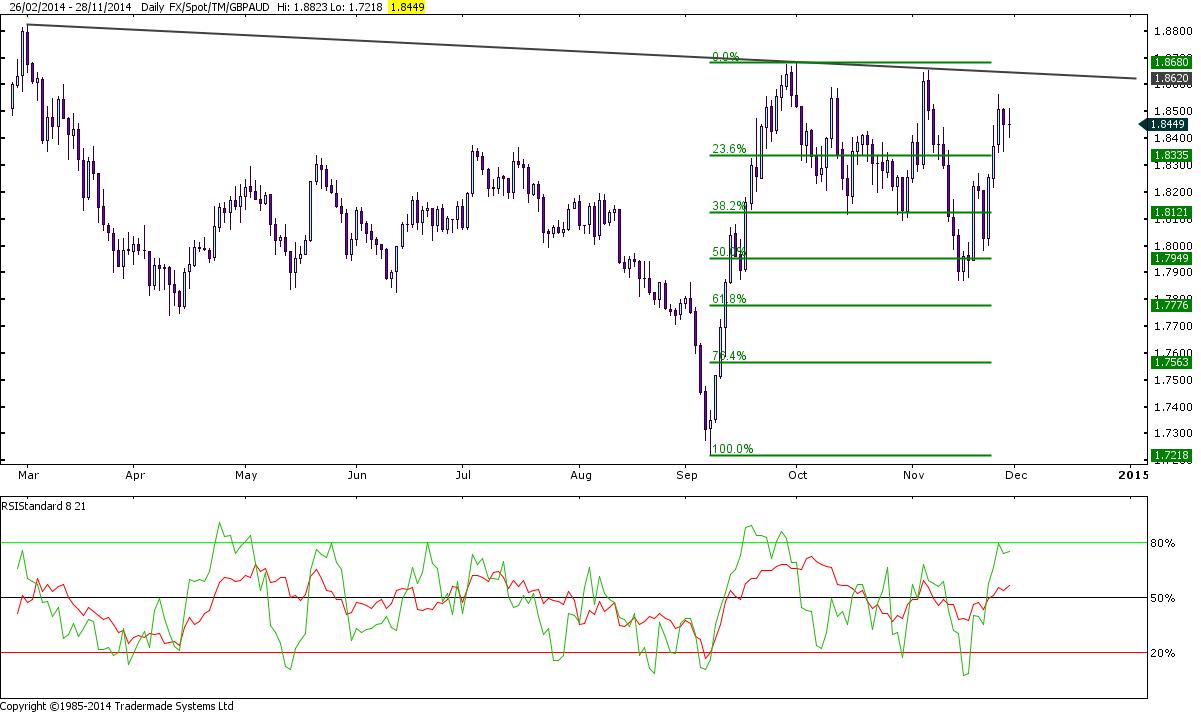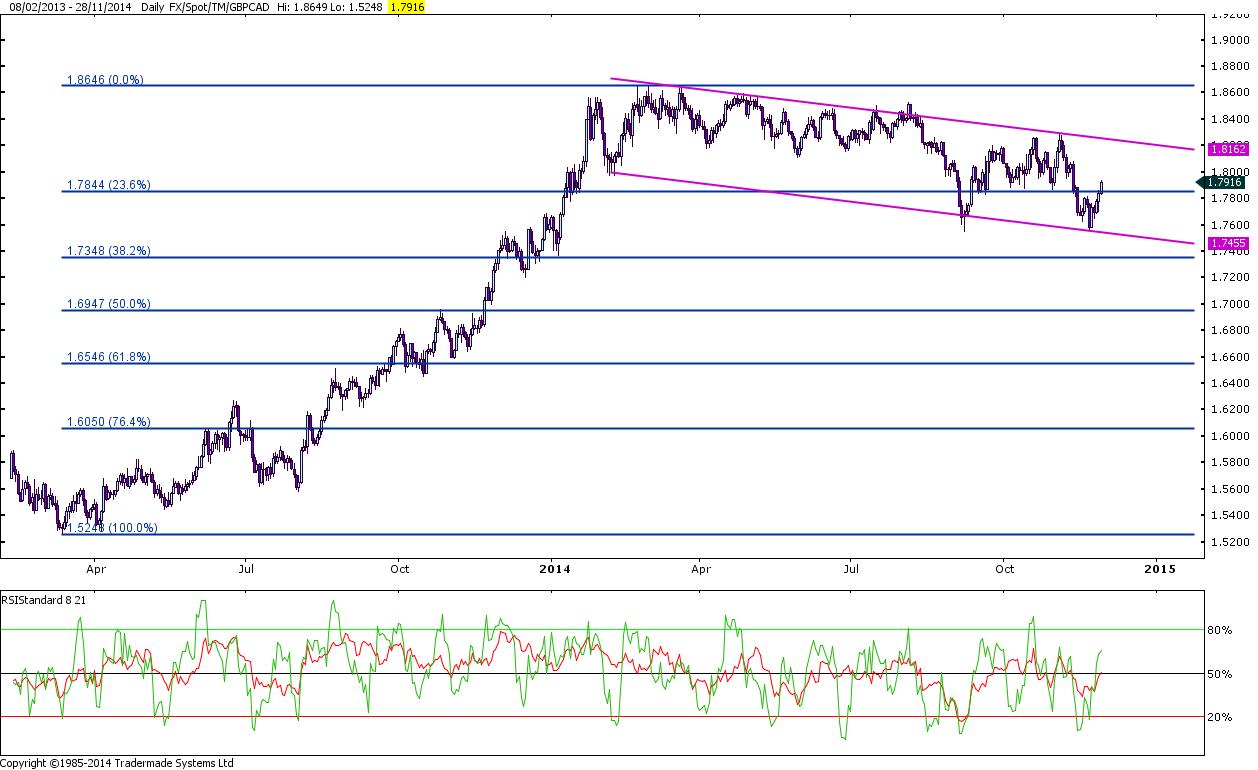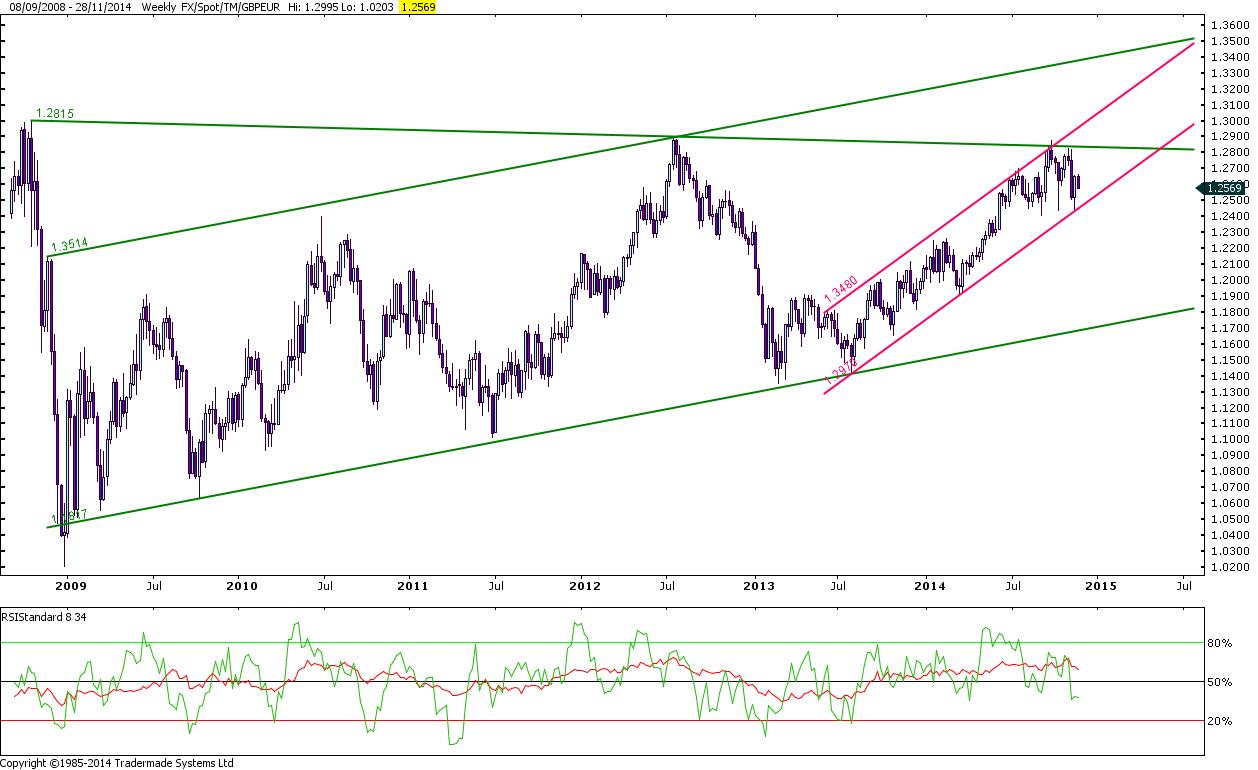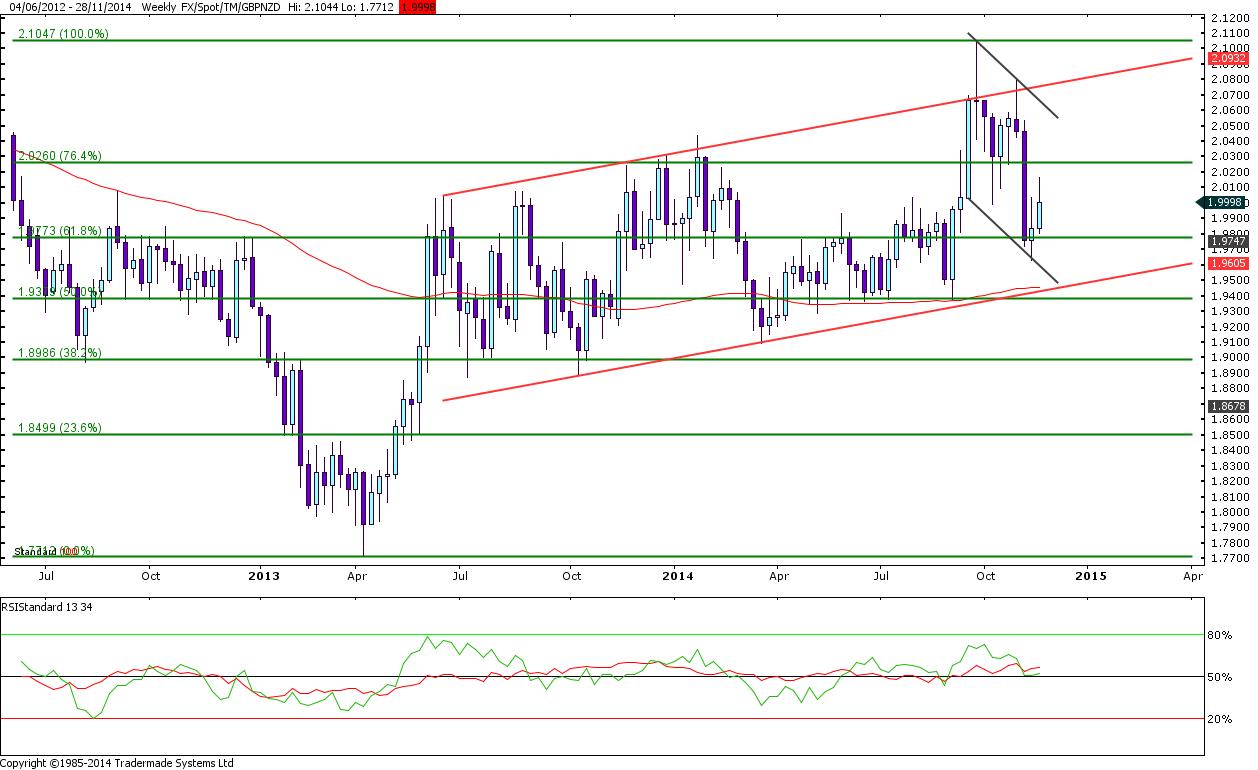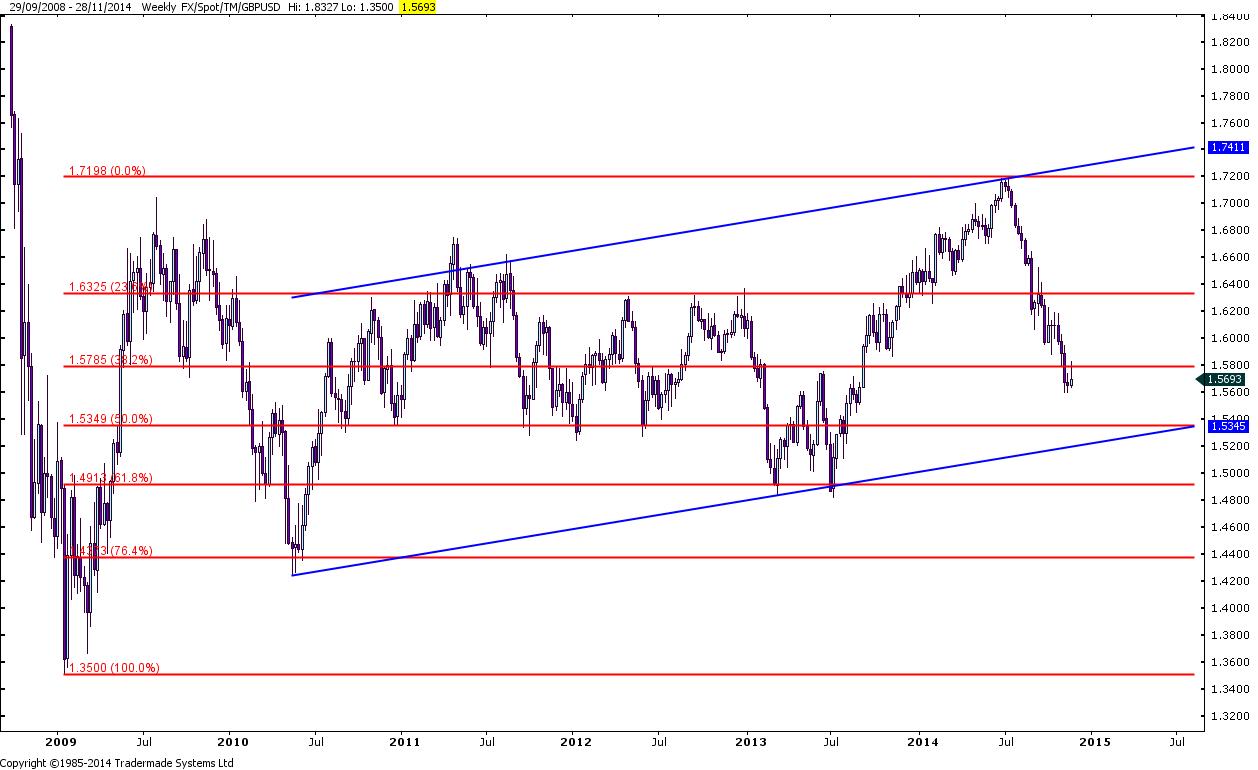This Week's Highlights
- Euro traders confounded by disparate data
- Canadian GDP data should boost CAD
FX Market Overview
Are you fed up of hearing the expression 'Black Friday' yet? Yup, me too. It is already right up there with 'PPI claim' and 'injury lawyer' as my least favourite terms. Oh and 'up to'. That's just meaningless but it's everywhere. Something that is 'up to 100% effective' could be abjectly useless and still not make the claim fraudulent and yet the trend persists. Oh and 'Can I GET a latte'. No I am the barista and I will get you a latte but you can HAVE one. GrrrAnyway, welcome to Friday; the day after Thanksgiving Day, Black Fri...... call it what you will. The financial markets call it the last day of the month and that has some impact as traders close out positions and balance their books. That activity alone will cause volatility let alone the effect of the data diary.
Yesterday's excitement stemmed from a number of surprises. German retail sales bounced in October after a sharp decline the previous month. That was positive for the euro and seeing German unemployment fall to an all-time low reignited the concern over a two-tier European economy. As you know, the unemployment level in the likes of Greece, Spain and Italy is around 24%; a stark contract to Germany's 6.6%. So the differences between Bundesbank and ECB members are pretty obvious. Germany doesn't need extra stimulus but everywhere else in Europe does. Something has to give and that nervousness is what is keeping the euro weak. We get the Eurozone unemployment and inflation data today but no one is expecting anything as positive as the German numbers.
The UK data has been largely healthy of late even though we aren't seeing any records being broken. UK consumer confidence remains relatively positive and retailers are clearly hoping they can lure the buyers out with early Christmas discounts. Oh haven't you heard; it's Black Fri.... ooops. They nearly got me. Today's UK data diary is as empty as Andrew Mitchell's bank account so don't expect too much excitement surrounding the Pound.
This afternoon brought the Canadian economic growth data. The forecasters were struggling to agree on the likely outcome but a 0.3% rise on the month was near the centre of the best-guess expectations. That would have helped strengthen the Canadian Dollar which is already buoyed by a stronger US Dollar but hampered by a fall in oil prices after OPEC decided to keep production levels as they are. The actual result was wide of that mark but more of that below.
And then it is the weekend. If you are planning on popping over to Venice for a break and you own a suitcase with hard plastic wheels; I suggest you get over there very soon. New suitcase regulations are being proposed to stop tourists trundling around the streets of Venice unless they either carry their suitcases or use quiet ones. The locals are fed up of the clickety clickety noises that these suitcases make. I've only been there once but piazza San Marco sounded like it had been hit with an invasion of crickets each time a large cruise liner arrived. I am guessing €500 fines might change all that.
Currency - GBP/Australian Dollar
As the Australian authorities worry about the strength of the Australian Dollar, they are being assisted by weakness in Chinese data and a drop in the value of the iron ore and other raw materials that Australia relies upon in export markets. The net result is that Sterling's resilience has allowed it to press to higher levels against the Aussie Dollar again. We appear to be heading for the trend line target of A$1.86 but the Pound hasn't proven to be robust enough to break that trendline in the past year and the relative Strength indicator would suggest it may run out of steam again. So A$1.86 looks like a great AUD buying opportunity. If the Pound breaks to higher levels though the opportunity exists for a February high of A$1.88.
Currency - GBP/Canadian Dollar
Today's Canadian data was very mixed and that confused traders. September economic growth data was much better than forecast at 2.8%. The markets had forecast a 2.1% figure. However, even though the monthly data was so robust, the figure was still below the August 3.6% number and the release was accompanied by another decline in industrial, and raw material prices. As Canada is a large scale exporter of raw materials, that weighed on the Canadian Dollar. Thus we saw the CAD weaken throughout the afternoon and you can see that bounce in the chart above. In essence, the Sterling - Canadian Dollar exchange rate could trade as high as C$1.8160 and still be in a downward trend channel which started at the beginning of 2014. Support for the Pound can be found at around C$1.75; so it is pretty straightforward to use these top and bottom levels as your outer limits and trade accordingly.
Currency - GBP/Euro
With all the in-fighting going on between Europe's central bankers, the Euro ought to be weaker. The Bundesbank wants an end to stimulus because that would suit Germany's resurgent economy but the other Eurozone states could really do with a sizable cash injection to try to reduce their dire unemployment levels and stimulate some sort of growth – any sort of growth in fact. So while that disagreement rages on, we can expect the Sterling – Euro exchange rate to bounce between €1.24 and €1.2750. Only very strong or very poor EU or UK data will dislodge that I suspect. The chart is a picture of uncertainty and that is not surprising when each new news release adds to the muddled picture.
Currency - GBP/New Zealand Dollar
New Zealand data would suggest the Reserve Bank of New Zealand is still struggling with an overheated housing market and an overvalued NZ Dollar. Their clear decision not to raise interest rates to cool housing has maintained demand for the NZ Dollar as a yield source but has not caused further strength. However, the slowdown in Chinese data does raise some concern over NZ exports and that is weighing on the Kiwi Dollar. Add in the concern over the robustness of the UK recovery and it is clear to see why the Sterling – NZ Dollar exchange rate is caught in the current uneasy equilibrium. NZD sellers are very quick to act at NZ$1.97 or below and NZD buyers are leaping into the market as soon as the rate starts with a NZ$2. I doubt those parameters will change in the short term.
Currency - GBP/US Dollar
If I were a gambling man (and I am not) I would put a small wager on the Sterling – US Dollar exchange rate continuing to slide towards $1.5350. That marks the bottom of the trend this pair has been in for at least 4 years and would make sense in respect of the fall in oil prices and the upbeat mood in the US economy. Sterling is strong in most other exchange rates but the US economy has more internal resilience than the UK; as evidenced by our fears over the lack of growth in Europe. The fall from $1.7170 to the current $1.56 level has taken 5 months to develop but there doesn't appear to be any abatement in the pace of decline. However, that 9% gain in the value of the US Dollar does offer some attractive levels for those who need to sell the USD and buy sterling; so there is scope for a bounce. That would be a welcome break for USD buyers and, if it does actually happen, it probably needs to be seized with both hands.
Information on these pages contains forward-looking statements that involve risks and uncertainties. Markets and instruments profiled on this page are for informational purposes only and should not in any way come across as a recommendation to buy or sell in these assets. You should do your own thorough research before making any investment decisions. FXStreet does not in any way guarantee that this information is free from mistakes, errors, or material misstatements. It also does not guarantee that this information is of a timely nature. Investing in Open Markets involves a great deal of risk, including the loss of all or a portion of your investment, as well as emotional distress. All risks, losses and costs associated with investing, including total loss of principal, are your responsibility. The views and opinions expressed in this article are those of the authors and do not necessarily reflect the official policy or position of FXStreet nor its advertisers. The author will not be held responsible for information that is found at the end of links posted on this page.
If not otherwise explicitly mentioned in the body of the article, at the time of writing, the author has no position in any stock mentioned in this article and no business relationship with any company mentioned. The author has not received compensation for writing this article, other than from FXStreet.
FXStreet and the author do not provide personalized recommendations. The author makes no representations as to the accuracy, completeness, or suitability of this information. FXStreet and the author will not be liable for any errors, omissions or any losses, injuries or damages arising from this information and its display or use. Errors and omissions excepted.
The author and FXStreet are not registered investment advisors and nothing in this article is intended to be investment advice.
Recommended Content
Editors’ Picks
EUR/USD edges lower toward 1.0700 post-US PCE

EUR/USD stays under modest bearish pressure but manages to hold above 1.0700 in the American session on Friday. The US Dollar (USD) gathers strength against its rivals after the stronger-than-forecast PCE inflation data, not allowing the pair to gain traction.
GBP/USD retreats to 1.2500 on renewed USD strength

GBP/USD lost its traction and turned negative on the day near 1.2500. Following the stronger-than-expected PCE inflation readings from the US, the USD stays resilient and makes it difficult for the pair to gather recovery momentum.
Gold struggles to hold above $2,350 following US inflation

Gold turned south and declined toward $2,340, erasing a large portion of its daily gains, as the USD benefited from PCE inflation data. The benchmark 10-year US yield, however, stays in negative territory and helps XAU/USD limit its losses.
Bitcoin Weekly Forecast: BTC’s next breakout could propel it to $80,000 Premium

Bitcoin’s recent price consolidation could be nearing its end as technical indicators and on-chain metrics suggest a potential upward breakout. However, this move would not be straightforward and could punish impatient investors.
Week ahead – Hawkish risk as Fed and NFP on tap, Eurozone data eyed too

Fed meets on Wednesday as US inflation stays elevated. Will Friday’s jobs report bring relief or more angst for the markets? Eurozone flash GDP and CPI numbers in focus for the Euro.
